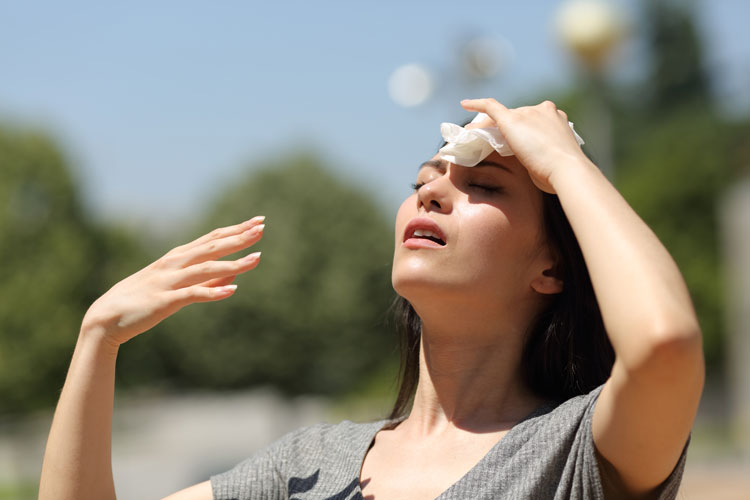
A heat wave swept across the nation this week, bringing humidity and extremely hot weather to both northern and southern parts of the country. With the official start of summer yet to arrive, now is a good time to remember how dangerous heat can be, especially for those working in the elements.
In a University of Wisconsin-Madison Division of Extension fact sheet and companion video, Jim Versweyveld emphasized the risk of heat-related sickness and death.
“I would encourage producers to take heat stress seriously,” said the farm management outreach specialist. “More people die from heat stress than from floods, hurricanes, and severe weather events combined.”
He explained that heat stress falls into two primary categories based on severity. The first is heat exhaustion, with symptoms of cool, moist skin and heavy sweating. Often, people with heat exhaustion will have a headache, nausea, or vomiting, but Versweyveld said they may still have a normal body temperature.
A person with heat exhaustion should be moved to a cool, shady place. Loosen clothing, and moist cloths applied to the forehead, wrists, and chests will help them cool down. If alert, the person should drink cool fluids every 15 minutes. If symptoms don’t improve within an hour, contact a medical professional.
Heat stroke is even more serious. Versweyveld said heat stroke victims will have hot, red skin that is dry to the touch and may have an elevated body temperature. They could experience rapid breathing and a weak pulse and might drift in and out of consciousness.
“Heat stroke is life threatening,” he said, and 911 should be called. While waiting for emergency assistance, cool the person using fans, sprinklers, or immersing them in cool (but not cold water).
Farm work does not cease for rising temperatures, so steps must be taken to reduce the risk for those working in hot conditions. For starters, remain hydrated. “Water is your best choice,” Versweyveld said. “Avoid sugary or caffeinated beverages.”
If possible, plan strenuous tasks for early morning or early evening, when it is cooler. Shorten shifts or allow for more breaks and provide shade and fans for those working in the heat.
Loose fitting hats, breathable clothing, and sunscreen should be worn. For more ideas on working in hot weather, visit the fact sheet, “How to avoid the risks of heat stress.”
“Dairy producers typically do a really good job addressing heat stress for their cows,” Versweyveld pointed out. “But sometimes they don’t think about the impact that might occur for themselves, their family members, and their workers.”








